42 expanded accounting equation worksheet
Debits Credits Fully Expanded Equation - dwmbeancounter.com Fully Expanded Accounting Equation. Assets = Liabilities + Beginning Owner's Equity + Additional Owner Investments + Revenues - Expenses - Draws. In the Expanded Version of the Accounting Equation, "Ma Capital's Kids" are hiding behind her skirt. They're there; you just don't see them. Expanded Accounting Equation - Examples | Concept | Explanation The expanded accounting equation also demonstrates the relationship between the balance sheet and the income statement by seeing how revenues and expenses flow through into the equity of the company. Since corporations, partnerships, and sole proprietorships are different types of entities, they have different types of owners.
Accounting Formula | Example, With Excel Template - EDUCBA Step 3: Next, figure out the value of the total equity of the company. It is the aggregate of capital raised in the form of share capital and retained earnings, including profit generated in the business. Step 4: Finally, the accounting formula can be represented as total assets equivalent to the summation of total liabilities and total equity ...

Expanded accounting equation worksheet
Expanded Accounting Equation - Overview, Formula, Examples The expanded accounting equation is broken down to be: Assets = Liabilities + Share Capital + Retained Earnings Assets = Liabilities + CC + BRE + R + E + D Where: CC = Contributed Capital BRE = Beginning Retained Earnings R = Revenue E = (-) Expenses D = (-) Dividends N.B.: Expenses and dividends will be negative numbers if applicable. What is the expanded accounting equation? | AccountingCoach The expanded accounting equation for a sole proprietorship is: Assets = Liabilities + Owner's Capital + Revenues - Expenses - Owner's Draws. The expanded accounting equation for a corporation provides more details for the stockholders' equity amount shown in the basic accounting equation. What is the Expanded Accounting Equation? - Definition | Meaning | Example An expanded accounting equation for a partnership breaks out the equity section to include owner's capital, owner's withdrawals, revenues and expenses. Thus, equity = capital - withdrawals + revenues - expenses. Since partnerships rarely have a single member, the equation shows the total of all capital accounts and all withdrawals taken ...
Expanded accounting equation worksheet. Transactions Expanded Equation - BC Bookkeeping Tutorials ... Transaction Analysis Using the Expanded Accounting Equation Assets = Liabilities + Owner's Equity In the previous table, we entered all the transactions that affected Owner's Equity under one heading; namely, Owner's Equity and disregarded whether it was a revenue, expense, or draw item. expanded accounting equation worksheet 31 Expanded Accounting Equation Worksheet - Notutahituq Worksheet notutahituq.blogspot.com. equation liabilities investopedia statements profit exxon implies stockrington xom. Accounting Equation Exercises Grade 8 - Tessshebaylo . equation. 5.7: End of chapter exercises - Business LibreTexts Prepare an expanded accounting equation worksheet for the Zeon Company for February given what was done in January and the following transactions: February 5 Paid $450 in cash to the bank on the loan borrowed in January and paid $400 in interest on that loan. February 11 Paid the bill from the utilities company from January Expanded Accounting Equation - YouTube made with ezvid, free download at Expanded Accounting Equation
Expanded Accounting Equation | Explanation | Example - XPLAIND.com Expanded accounting equation is a longer version of the basic accounting equation i.e. assets = liabilities + equity. It splits assets, liabilities and equity into their components. However the relation between assets, liabilities and equity still remains the same as in the basic accounting equation. Expanded Accounting Equation - Explanation and Examples In the expanded accounting equation, the "capital" portion is broken down into several components: contributions, withdrawals, income, and expenses. Basic Accounting Equation: Assets = Liabilities + Capital Expanded Accounting Equation: Assets = Liabilities + (Beginning Capital + Additional Contributions - Withdrawals + Income - Expenses) accounting equation worksheet grade 8 accounting equation worksheet grade 8 Accounting accountingcoach tessshebaylo statements liabilities angelaf morsel. Expanded accounting equation. Accounting equation exercises grade 8 accounting equation worksheet grade 8 How to Solve Accounting Equations With Examples - MyAssignmenthelp.com The expanded accounting equation for a sole proprietorship is, Assets = Liabilities + Owner's Capital + Revenues - Expenses - Owner's Draws The eight transactions that already been listed under the basic accounting equation are demonstrated in the expanded accounting equations, So, you can calculate the Net Income,
Self Quiz - Home My courses BUS 1102 - StuDocu The expanded accounting equation breaks down Equity into four categories. Select one: a. Original stock, Dividends, Revenues and Expenses b. Owner ́s Equity, Common stock and Dividends c. Common stock, Dividends, Revenues and Expenses Question 6 Correct Mark 1 out of 1. Flag question Question text Which of these accounts is an asset? Accounting Equation - Balance Sheet Equation - Examples Accounting equation is a basic concept of agreement between left-hand and right-hand site and starting pint of double entry. Double entry bookkeeping states that for every debit entry there should be pass a credit entry. Every transaction has twofold effect; this concept has a result of Balance Sheet Equation or Fundamental Equation.At any point of time total assets must be equal to equities. Expanded Accounting Equation (Definition, Examples) - WallStreetMojo For a corporation, the equation will be: Assets = Stockholder Equity + Retained Earnings Expanded Accounting Equation = Paid-up Capital - Treasury Stock (if any) + Liabilities + Income - Expenses - Dividends Stockholders Equity is the sum of the Paid-up capital of the organization reduced by Treasury stock. Expanded accounting equation - Accounting For Management The general form of accounting equation is mentioned below. Assets = Liabilities + Equity Expanded accounting equation: The accounting equation is further extended mainly through the equity point of view. The equity is split into owner's capital, owner's withdrawal, revenue, and expenses.
Solved O o Security deposits paid 2. in 1. 37 Prepare an - Chegg transcribed image text: o o security deposits paid 2. in 1. 37 prepare an expanded accounting equation worksheet for the zeon company to show the effect of the following transactions on the given dates - our accounting period is january: o january 2 investment of $75,000 in cash into the business by stockholders. o january 4 paid $10,000 in cash …
Expanded Accounting Equation Worksheet Quick and Easy Solution Expanded Accounting Equation Worksheet will sometimes glitch and take you a long time to try different solutions. LoginAsk is here to help you access Expanded Accounting Equation Worksheet quickly and handle each specific case you encounter. Furthermore, you can find the "Troubleshooting Login Issues" section which can answer your ...
What Is the Accounting Equation? | Examples & Balance Sheet The expanded accounting equation is: Assets = Liabilities + Owner's Equity + Revenue - Expenses - Draws Revenue is what your business earns through regular operations. Expenses are the costs to provide your products or services. Different transactions impact owner's equity in the expanded accounting equation.
Accounting Equation - Overview, Formula, and Examples The accounting equation is a basic principle of accounting and a fundamental element of the balance sheet. The equation is as follows: Assets = Liabilities + Shareholder's Equity This equation sets the foundation of double-entry accounting, also known as double-entry bookkeeping, and highlights the structure of the balance sheet.
Expanded Accounting Equation with Income & Expense Example - Guru99 Expanded Accounting Equation is the advance version of basic accounting equation. It add accounts like Revenue, Expense and Drawings to the Equation. Now that we also understand the terms Revenue, Expense, and Drawings, we can finally understand the accounting equation in its complete form. Let's take a look.
Solved Prepare an expanded accounting equation worksheet for - Chegg Prepare an expanded accounting equation worksheet for the Zeon Company for February given what was done in January and the following transactions: February 5 Paid $750 in cash to the bank on the loan borrowed in January and paid $900 in interest on that loan. February 11 Paid the bill from the utilities company from January
5.6: Preparing financial statements from accounting equation worksheet ... While the expanded accounting equation is a useful tool to consider transactions and their impact on various accounting elements, by itself it does not communicate very well the financial picture of a company. Remember that is the job of the 4 financial statements we learned about back in chapter 3.
Expanded Accounting Equation Excel Worksheet Expanded Accounting Equation Excel Worksheet will sometimes glitch and take you a long time to try different solutions. LoginAsk is here to help you access Expanded Accounting Equation Excel Worksheet quickly and handle each specific case you encounter. Furthermore, you can find the "Troubleshooting Login Issues" section which can answer ...
Expanded Accounting Equation | AccountingCoach Expanded Accounting Equation for a Sole Proprietorship The owner's equity in the basic accounting equation is sometimes expanded to show the accounts that make up owner's equity: Owner's Capital, Revenues, Expenses, and Owner's Draws. Instead of the accounting equation, Assets = Liabilities + Owner's Equity, the expanded accounting equation is:
Expanded Accounting Equation: Definition, Formula, How It Works The expanded accounting equation is a form of the basic accounting equation that includes the distinct components of owner's equity, such as dividends, shareholder capital, revenue, and...
Accounting equation worksheet - Liveworksheets.com ID: 1760047 Language: English School subject: Accounting Grade/level: 10-12 Age: 16+ Main content: Accounting equation Other contents: Accounting equation Add to my workbooks (17) Download file pdf Embed in my website or blog Add to Google Classroom
What is the Expanded Accounting Equation? - Definition | Meaning | Example An expanded accounting equation for a partnership breaks out the equity section to include owner's capital, owner's withdrawals, revenues and expenses. Thus, equity = capital - withdrawals + revenues - expenses. Since partnerships rarely have a single member, the equation shows the total of all capital accounts and all withdrawals taken ...
What is the expanded accounting equation? | AccountingCoach The expanded accounting equation for a sole proprietorship is: Assets = Liabilities + Owner's Capital + Revenues - Expenses - Owner's Draws. The expanded accounting equation for a corporation provides more details for the stockholders' equity amount shown in the basic accounting equation.
Expanded Accounting Equation - Overview, Formula, Examples The expanded accounting equation is broken down to be: Assets = Liabilities + Share Capital + Retained Earnings Assets = Liabilities + CC + BRE + R + E + D Where: CC = Contributed Capital BRE = Beginning Retained Earnings R = Revenue E = (-) Expenses D = (-) Dividends N.B.: Expenses and dividends will be negative numbers if applicable.






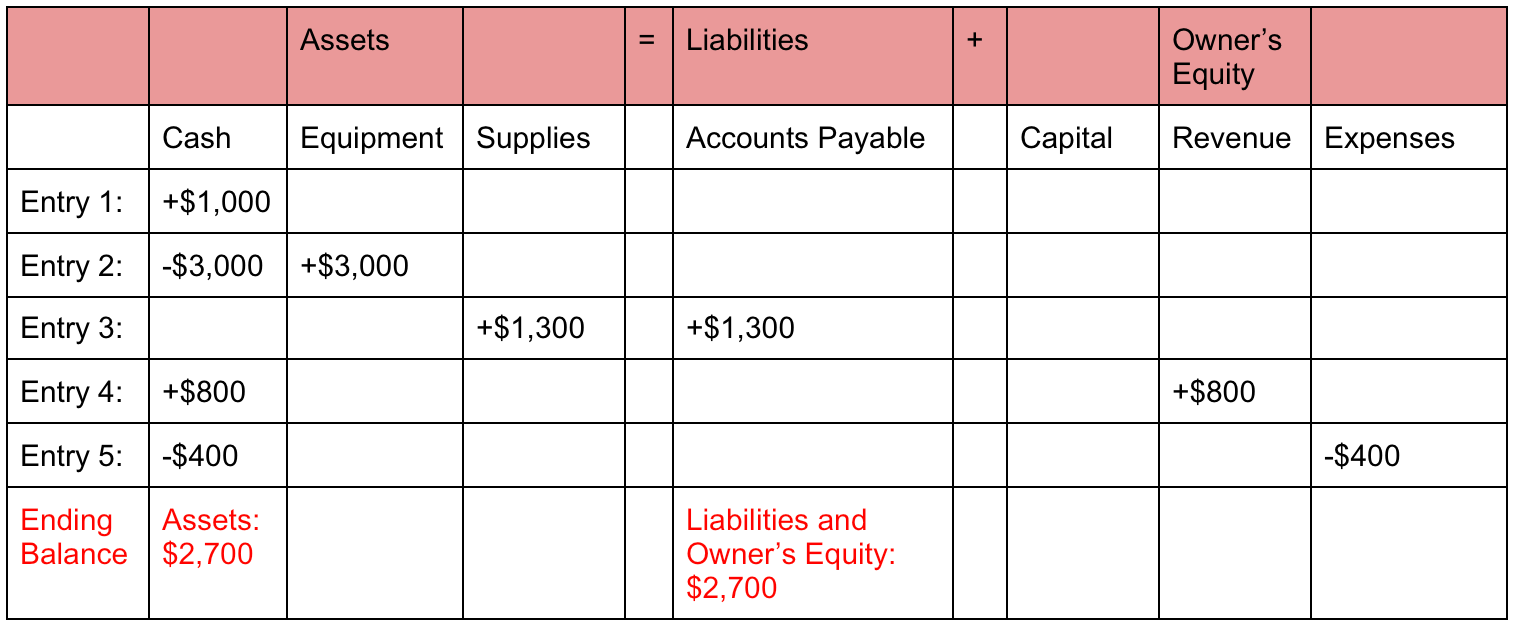
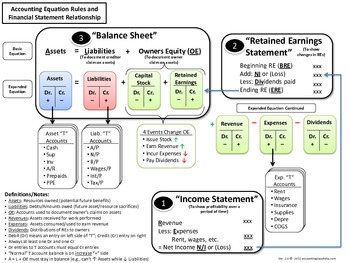

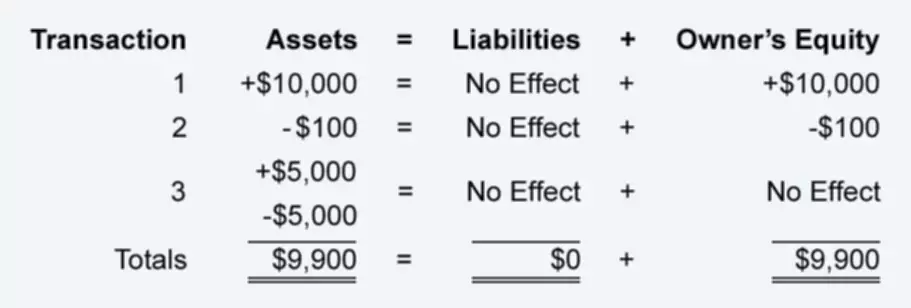
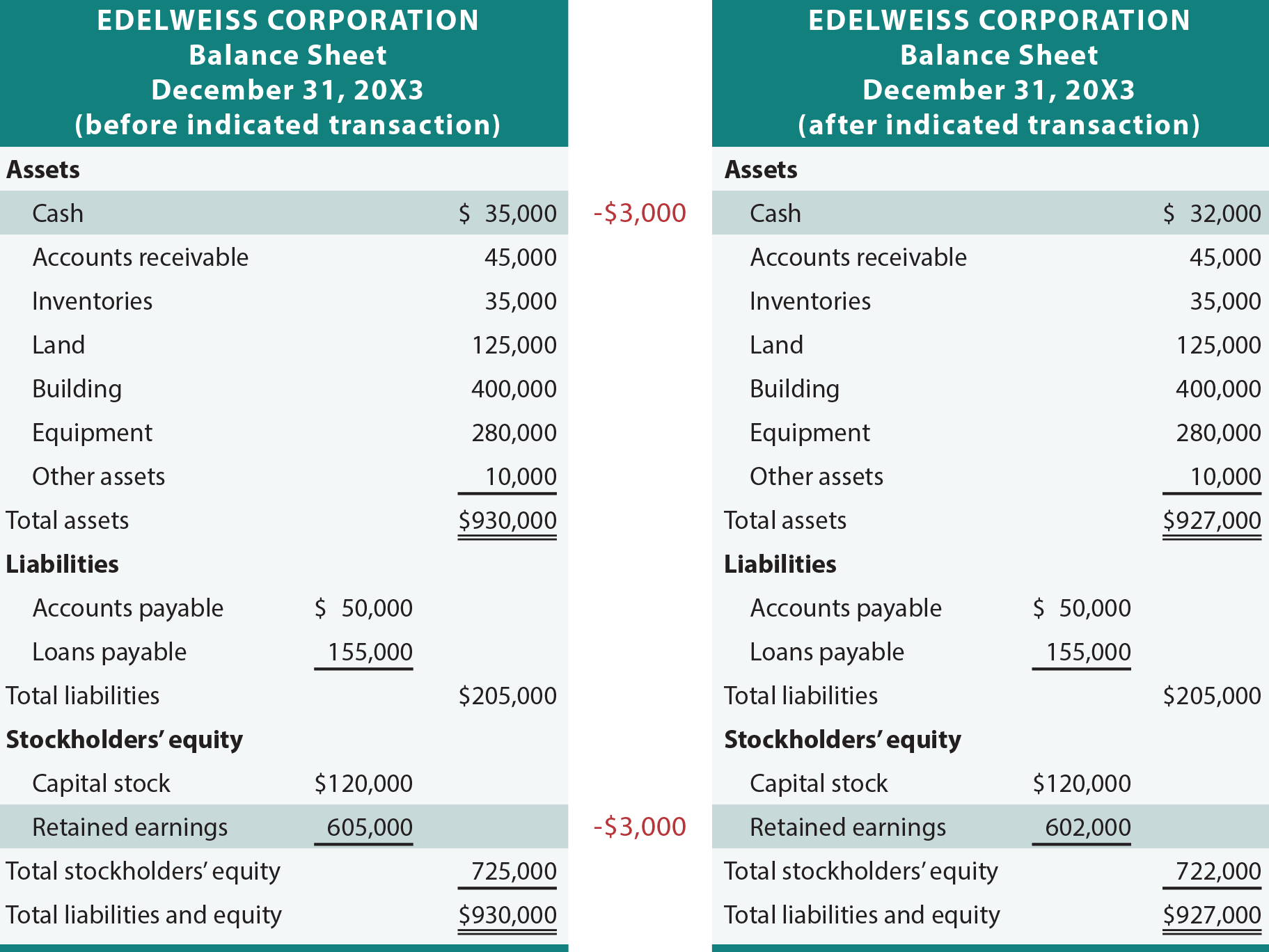



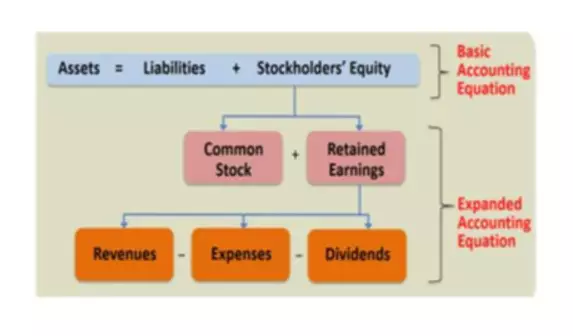
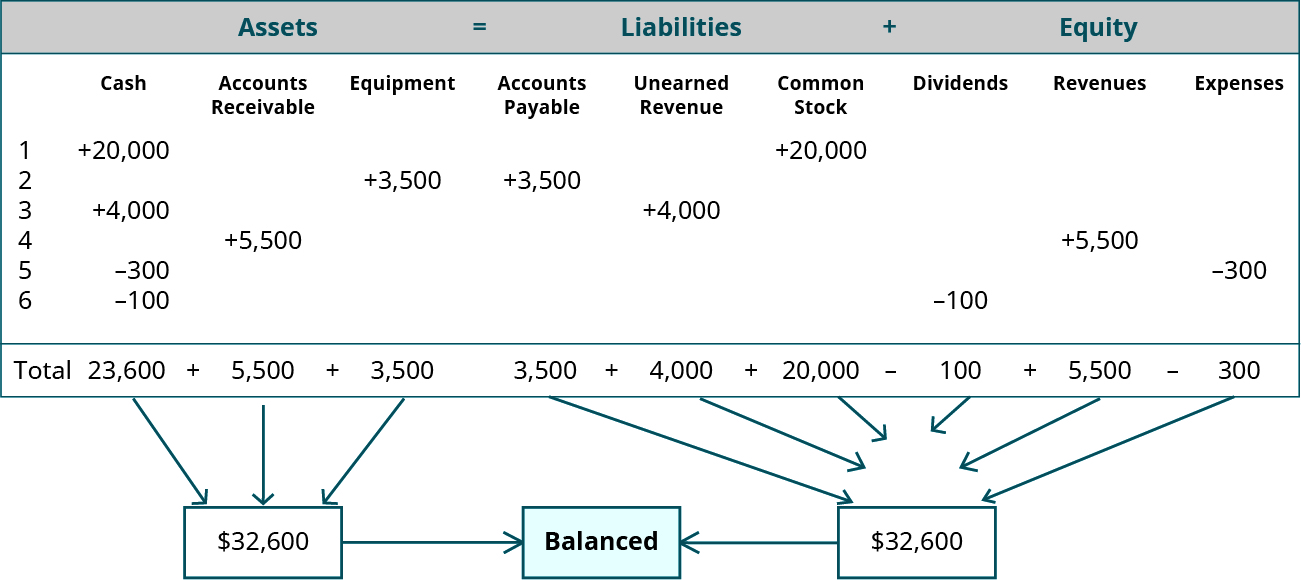


:max_bytes(150000):strip_icc()/Clipboard02-5c6ecfab46e0fb0001b6815b.jpg)


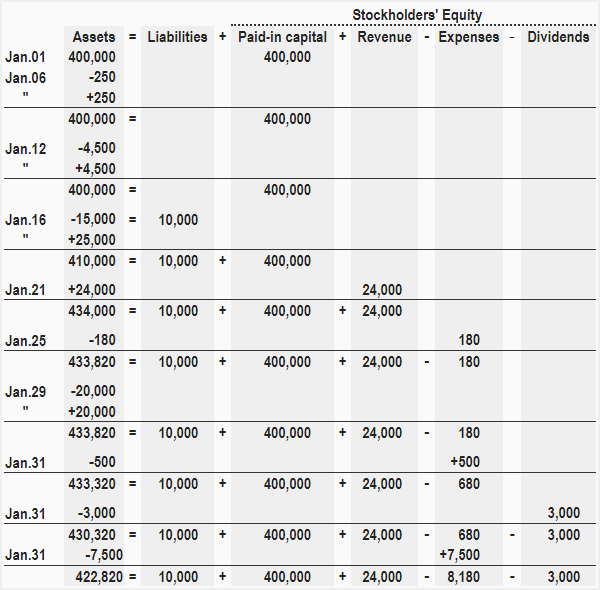






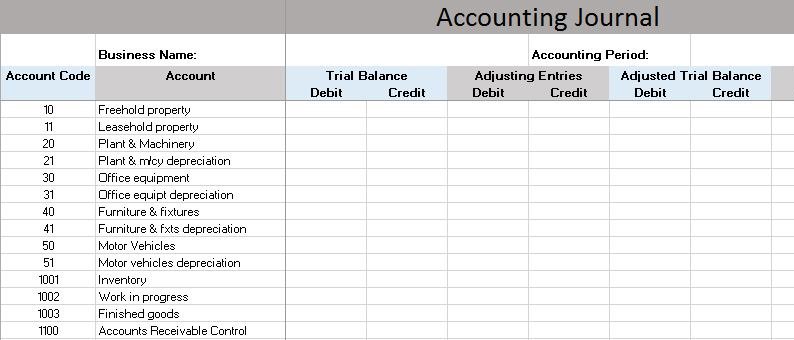



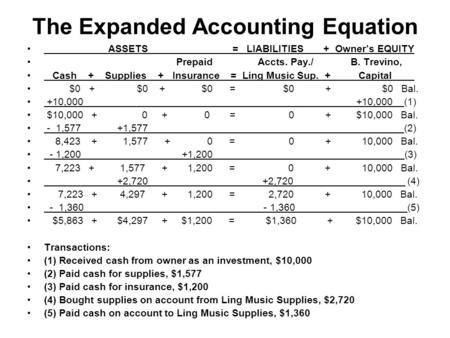
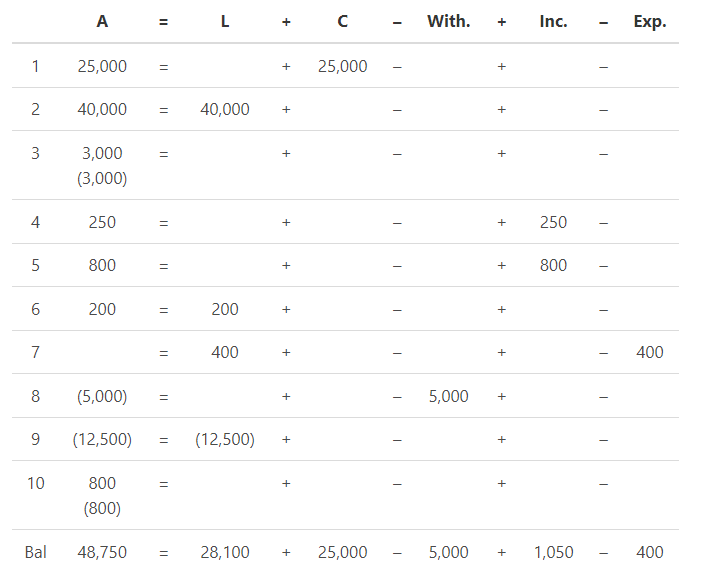
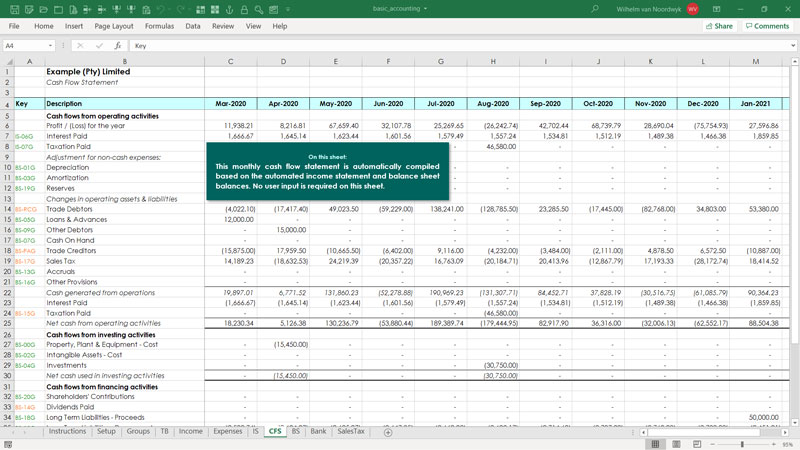



0 Response to "42 expanded accounting equation worksheet"
Post a Comment